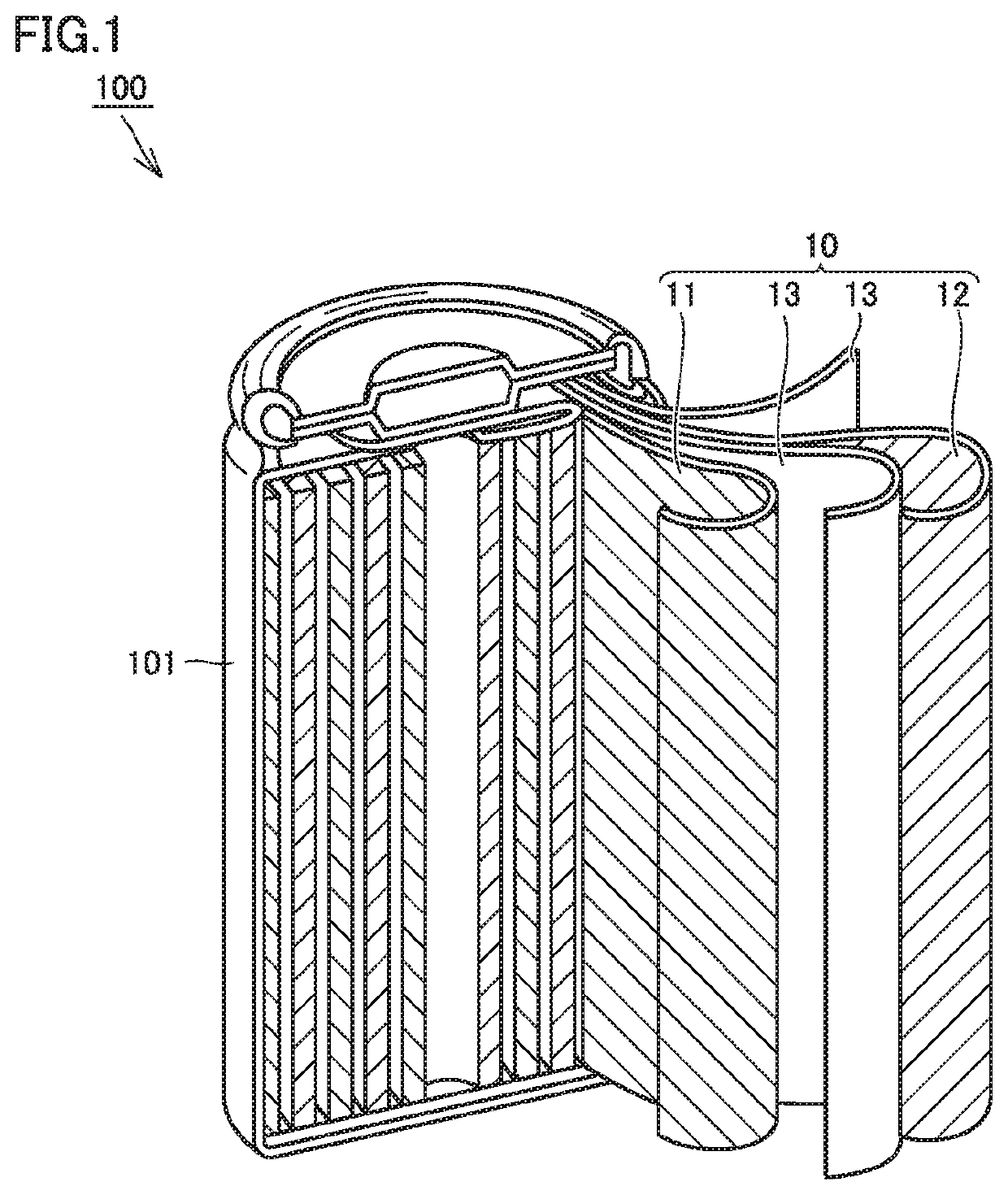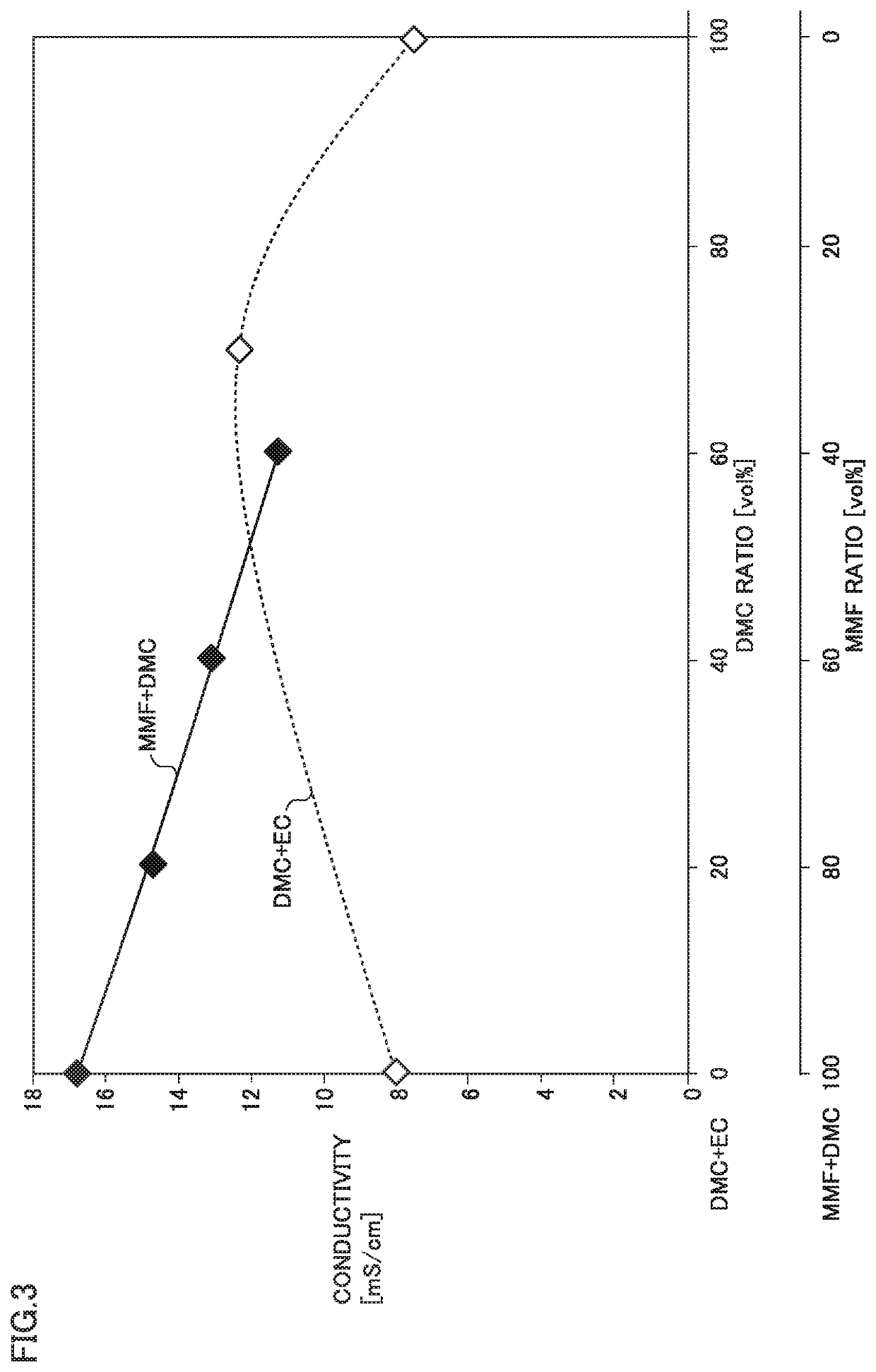Electrolyte solution and lithium ion battery
a lithium ion battery and electrolyte technology, applied in the direction of electrolytes, cell components, organic electrolytes, etc., can solve the problems achieve high dissociative capacity, low viscosity, and solve the problem of low dissociative capacity
- Summary
- Abstract
- Description
- Claims
- Application Information
AI Technical Summary
Benefits of technology
Problems solved by technology
Method used
Image
Examples
case 101
[0062]Case 101 accommodates an electrode array 10 and an electrolyte solution (not shown). The electrolyte solution in the present embodiment is adopted as the electrolyte solution. Namely, battery 100 contains at least the electrolyte solution in the present embodiment. Details of the electrolyte solution in the present embodiment are as described previously. Battery 100 is expected to be high in output because it is considered that the electrolyte solution in the present embodiment can be high in conductivity.
[0063]Battery 100 may contain a gel electrolyte. Battery 100 may be what is called a lithium ion polymer battery. The gel electrolyte can be formed by impregnation and swelling of a polymer material with the electrolyte solution. Improvement in output is expected as a result of adoption of the electrolyte solution in the present embodiment as the electrolyte solution to be contained in the gel electrolyte. The polymer material contained in the gel electrolyte may be, for exam...
example 1
[0090] degree of dissociation=0.48
[0091]Comparative Example 2: degree of dissociation=0.24
[0092]The degree of dissociation above is calculated from equations (I) and (II) below. The equation (II) below is the Nernst-Einstein equation.
Degree of dissociation=π / πNE (I)
πNE=(e02N / kT)(Dcation+Danion) (II)
[0093]In the equation (I), “π” represents a conductivity of the electrolyte solution and actually measured with a conductivity meter. “πNE” represents a conductivity calculated in accordance with the equation (II). In the equation (II), “N” represents an Avogadro's number. “e0” represents elementary charge. “k” represents a Boltzmann constant. “T” represents an absolute temperature. “Dcation” and “Danion” each represent a diffusion coefficient and are actually measured by NMR.
[0094]FIG. 2 shows a first graph of relation between a composition of a solvent and a conductivity.
[0095]FIG. 2 shows results in Comparative Examples 1 to 3 and Examples 1 and 3 to 5. A mixed solvent of DMC and EC ...
PUM
| Property | Measurement | Unit |
|---|---|---|
| vol % | aaaaa | aaaaa |
| vol % | aaaaa | aaaaa |
| conductivity | aaaaa | aaaaa |
Abstract
Description
Claims
Application Information
 Login to View More
Login to View More - R&D
- Intellectual Property
- Life Sciences
- Materials
- Tech Scout
- Unparalleled Data Quality
- Higher Quality Content
- 60% Fewer Hallucinations
Browse by: Latest US Patents, China's latest patents, Technical Efficacy Thesaurus, Application Domain, Technology Topic, Popular Technical Reports.
© 2025 PatSnap. All rights reserved.Legal|Privacy policy|Modern Slavery Act Transparency Statement|Sitemap|About US| Contact US: help@patsnap.com



